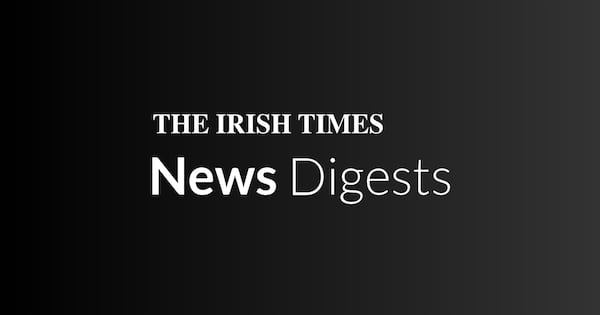Got any holidays planned? With the high cost of a house rental, resort or hotel stay in Ireland this summer, owning a bolt-hole of your own can appeal. But how much will it cost, and can you make it pay?
Unless you can buy in cash, you will need a mortgage to buy a holiday home. The maximum loan-to-value a bank will offer for such a property is 70 per cent, says Michael Dowling of Irish Mortgage Brokers.
Take for example a €300,000 holiday home, like No 10 Ballyconneely Holiday Homes in Galway, which is currently for sale at that price.
With a 70 per cent loan of €210,000, you will need to come up with €90,000 yourself. When it comes to repayment, most lenders restrict the term for holiday homes to 25 years, says Dowling.
READ MORE
Bank of Ireland, AIB and PTSB all lend for holiday homes. However, you will have to pay “buy to let” interest rates, which are more expensive than typical residential mortgage rates.
Even if you don’t plan to rent out the property, or you plan to use it to work remotely for months at a time, you will still pay buy-to-let rates because it’s not your primary residence.
“You are looking at rates from 4.85 per cent to 5.75 per cent on a variable basis, which is significantly higher than what’s available for a [family] home loan,” says Dowling.
Newer lenders Avant, MoCo and Nua Money don’t lend for holiday homes.
Haven, a subsidiary of AIB, will lend for holiday homes at home loan rates, says Dowling. You can still only borrow 70 per cent of the purchase price, but variable rates are between 3.75 and 3.95, or between 4.15 and 4.35 for a two- or five-year fix, Dowling adds.
Monthly repayments on a €210,000 mortgage over 25 years at 4.35 per cent would be about €1,150 a month.
Cost benefit
Compared to the cost of staycations over 25 years, is there a case to be made for a monthly mortgage payment on a holiday home?
Families are paying big money from now until the end of August for a week in tourist hotspots such as Brittas, Ballyconneely and Baltimore. Holiday rentals range from €1,500 to €2,700 for a week in high season.
Take for example a four-bed, three-bath house in Rosslare Strand, Co Wexford, which is currently for rent for €1,550 a week. Or, you’ll pay €2,200 for seven nights in a house in Brittas Bay Park, Co Wicklow, this month.
Looking ahead to July 2026, a seven-night stay in a three-bed self-catering lodge at Centre Parcs in Co Longford will set you back €3,250. If you’ve got children or grandchildren, then family getaways in summer, at school midterms, at Easter and at the new year can all really add up.
Few families will spend €13,800 – the annual mortgage on your €300,00 holiday home – on holidays in a year. But by spending that on a holiday home, it could be argued you are investing in a potential asset too.
Running costs
Of course, the full cost of owning a holiday home is more than just the mortgage. You’ll have to pay property tax, electricity, gas, the TV licence, and home insurance, as well as for ongoing maintenance and repairs.
Basically, think of all the costs you have in running your regular home, and double them.
While utilities will cost less than your primary residence, some heating when you are not present may be needed to ward off dampness.
And apart from those with a preference for a rustic break, you’ll probably want a similar level of comfort to your regular home. That means broadband and TV subscriptions too.
Grass-cutting is another overlooked cost. If you are not there to do it, you’ll be paying someone. Depending on the size of your grounds, this could be between €500 and €700 a year.
Also, bin charges even for the holiday season will come to about €30 or €40 a month.
If you are buying in a holiday development, expect to have to pay management fees too. These can be pretty hefty, depending on the grounds and amenities.
Take a three-bed, two-bath mobile home at Jack’s Hole resort at Brittas Bay, which is currently for sale for €312,500. Amenities at the mobile home park, which has a private beach, include tennis, boules, volleyball, basketball, a games room, children’s play areas, a soccer pitch, boat moorings and water sports. Management fees here are a hefty €5,000 a year.
Rental income
The majority of second homeowners don’t rent them out, estate agents will tell you. Those who do can recoup some of their costs, but they will incur others.
If you are using a letting company to advertise the property and to manage bookings, clean between bookings, respond to guest queries and oversee repairs, they will take a percentage of the rental income as their fee.
And any income from renting a property will be taxed at up to 52 per cent, depending on your marital status, tax credits, reliefs and other income.
If your home is used as a dwelling for fewer than 30 days in a full year, you’ll have to pay the vacant homes tax. If you are one of those who use a holiday home for just two weeks in the summer and again for a week each Easter and at the October midterm, you’ll fall into this category.
Having risen progressively since its introduction in 2022, the tax for the chargeable period ending October 31st, 2025, is seven times the local property tax applying to the home.
If you own a second home valued at €300,000 that is occupied for fewer than 30 days a year, you will pay the annual local property tax of about €315, plus an additional charge of €2,205 a year, for a total owner liability of €2,520 a year.
Latest census figures show there were 66,135 vacant holiday homes in April 2022, an increase of 4,000 since 2016. The most popular counties for homes used for recreation or leisure are Donegal, Kerry, Cork, Wexford and Mayo, according to CSO figures.
There were 339 vacant homes in Cork liable for the vacant homes tax in its first year, 308 in Donegal, 298 in Kerry, and 236 in Mayo – all holiday home hotspots.
You can contact us at OnTheMoney@irishtimes.com with personal finance questions you would like to see us address. If you missed last week’s newsletter, you can read it here.
















